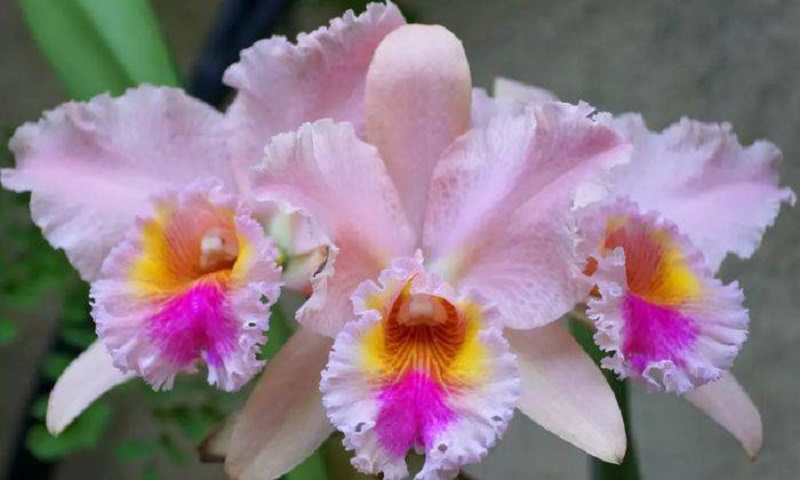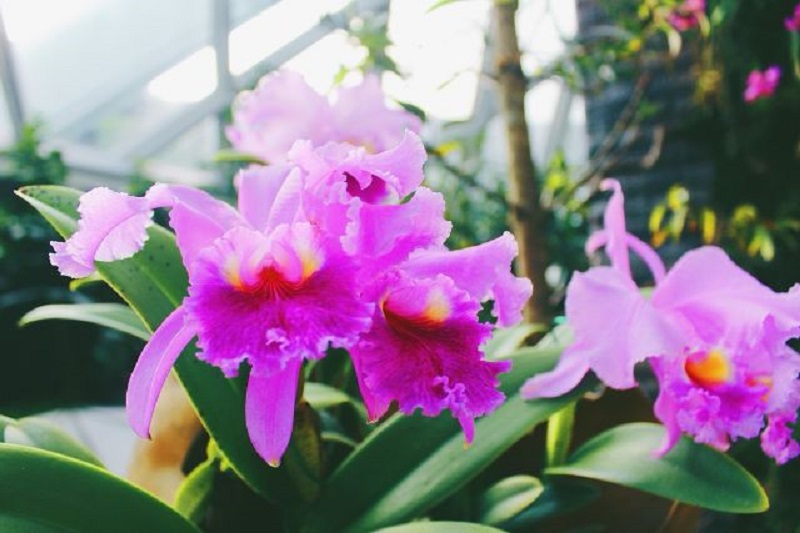Orchids have long captivated enthusiasts with their diverse forms and exquisite beauty, but few can match the allure of the Cattleya genus. Known for its stunning, vibrant flowers and distinct characteristics, Cattleya has become a favorite among orchid lovers and collectors. This article delves into the intriguing world of Cattleya orchids, exploring their botanical features, species, care requirements, and cultural significance.
Introduction to Cattleya Orchids
Cattleya orchids are renowned for their spectacular flowers and are a highlight in the orchid family, Orchidaceae. Native to the tropical regions of America, these orchids have become emblematic of elegance and sophistication in the world of horticulture. From their striking blooms to their unique growth patterns, Cattleya orchids offer a blend of beauty and complexity that makes them a captivating subject for study and cultivation.

Botanical Characteristics of Cattleya Orchids
Structure of Cattleya Orchids
Cattleya orchids are distinguished by their distinctive structural components:
- Pseudobulbs: Swollen stems that store nutrients and water.
- Leaves: Long, glossy leaves that vary in shape and size depending on the species.
- Flowers: Large, colorful blooms in a range of hues, including pink, purple, white, and yellow. The flowers are noted for their unique shapes and patterns.
Growth Patterns
Cattleya orchids exhibit diverse growth patterns:
- Epiphytic: Naturally inhabit trees and other plants.
- Terrestrial: Grow in soil.
- Lithophytic: Thrive on rocky surfaces.
Understanding these growth patterns helps in providing the right care and environment for Cattleya orchids.
Species and Hybrids of Cattleya
Notable Cattleya Species
Several species within the Cattleya genus are particularly notable:
- Cattleya labiata: Features striking, fragrant flowers in lavender and white.
- Cattleya walkeriana: Known for its compact size and delicate, pastel-colored flowers.
- Cattleya mossiae: Often referred to as the “Easter Orchid,” producing vibrant, fragrant blooms.
Popular Hybrids
Hybridization has led to many unique varieties, such as:
- Cattleya × Guarianthe
- Cattleya × Sophronitis
These hybrids often combine desirable traits from different species, resulting in stunning floral displays.
Breeding and Hybridization Techniques
Breeding Cattleya orchids involves cross-pollination to create new varieties with enhanced traits. Techniques include controlled pollination and selection of parent plants based on desirable characteristics.
Cultivation and Care for Cattleya Orchids
Growing Conditions
Cattleya orchids require specific conditions to thrive:
- Light: Bright, indirect light with some tolerance for direct sunlight.
- Temperature: Daytime temperatures between 70-85°F (21-29°C) and cooler nights of 55-65°F (13-18°C).
- Humidity: High humidity, often achieved through misting or humidity trays.
Potting and Media
- Potting Medium: Well-draining mediums like orchid bark, perlite, and sphagnum moss.
- Containers: Pots with ample drainage to prevent waterlogging.
Watering and Fertilizing
- Watering: Thorough but infrequent, allowing the medium to dry slightly between waterings.
- Fertilizing: Balanced, water-soluble orchid fertilizer every 2-4 weeks during the growing season.
Pruning and Repotting
- Pruning: Remove dead or yellowing leaves and spent flower spikes.
- Repotting: Done every 1-2 years or when the plant outgrows its container.
Pests and Diseases Affecting Cattleya Orchids
Common Pests
Cattleya orchids are susceptible to pests such as:
- Aphids
- Mealybugs
- Spider mites
Regular inspection and prompt treatment are essential.
Diseases
Common diseases include:
- Fungal Infections: Root rot and leaf spots.
- Bacterial Infections: Soft rot.
- Viral Infections: Various orchid viruses.
Prevention and Treatment
- Pest Management: Use integrated pest management techniques and natural remedies.
- Disease Control: Early detection and treatment with fungicides and proper care practices.

Cultural Significance of Cattleya Orchids
Historical Context
Cattleya orchids were first described in the 19th century and have since become symbols of prestige and botanical achievement.
Economic Importance
The commercial cultivation of Cattleya orchids is significant in the global orchid trade, leading to extensive breeding programs and new varieties.
Symbolism and Uses
In various cultures, Cattleya orchids symbolize luxury and beauty. They are often used in floral arrangements and decorations, adding elegance to any setting.
Cattleya orchids are a testament to the diverse beauty and complexity found in the world of orchids. With their stunning flowers, adaptable growth patterns, and significant cultural impact, they continue to captivate and inspire. Whether you’re a seasoned orchid enthusiast or new to the hobby, understanding and appreciating Cattleya orchids can enhance your enjoyment and knowledge of these remarkable plants. As cultivation techniques and hybridization methods advance, the future of Cattleya orchids promises even more exciting developments for orchid lovers around the world.
